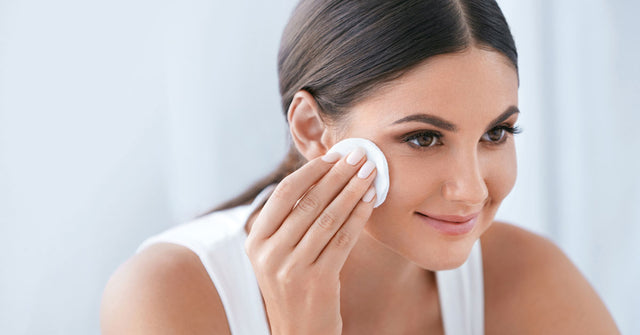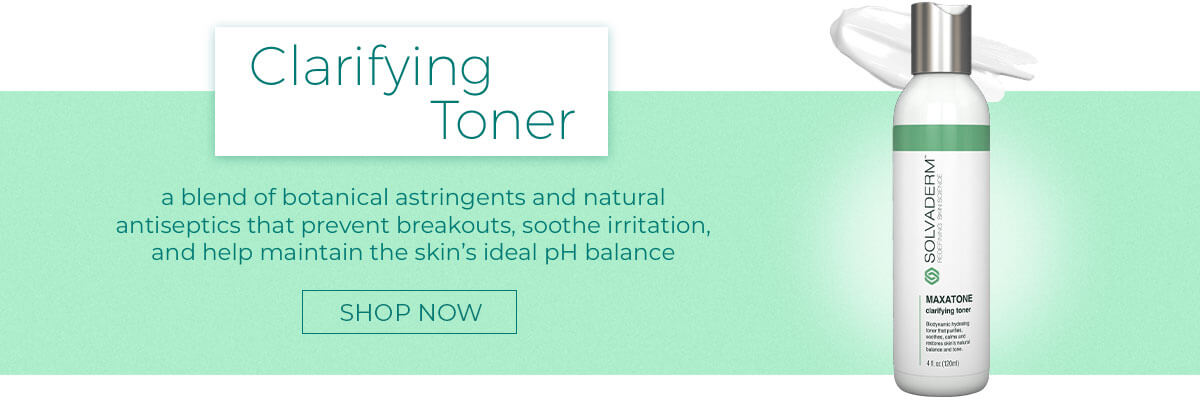Whether you decide to spend a few days at the beach or take a hiking trip with some friends, when summer comes it’s time to go outdoors. While it’s fun to spend time outside, you have to consider the impact the sun can have on your skin. A day in the sun may only lead to sunburn, but prolonged exposure over time can increase your risk of developing premature signs of age like sunspots or worse.
If you’re concerned about the Sunspots on your face, you’ll be happy to hear that there are ways to reduce their appearance. In this article, we’ll discuss treatments, tips, and helpful steps for preventing and reducing Sunspots.
What Are Sunspots?
First of all, what exactly are sunspots? In order to get rid of them, this is the first key point you need to understand. The good news is that sunspots are harmless, and generally only develop when you regularly spend too much time in the sun without sunscreen. While for general health and mood we do require some sun exposure, too much UV light can be harmful to your skin.
For most people, sunspots look like flat, round marks that are darker than the skin around them. If you’ve got Sunspots on your face, check to make sure that they are not bumpy. A bumpy region on the skin may indicate another dermatological issue.
In some cases, you may notice white spots on your skin from sun overexposure.
If you’ve got Sunspots, they’re generally referred to as lentigines. However, if the spots are white, they are called idiopathic guttate hypomelanosis.
What Causes Sunspots on the Face?
Just as the name suggests, these spots are generally caused by sun exposure[1]. It’s not going to happen when you just spend one day in the sun. Rather, Sunspots are something that develops gradually over time. Oftentimes, they take years to develop, but once you notice them, they can interfere with your self-confidence.
The question is - why do they develop? It comes down to melanin. This is actually a natural pigment that makes sure your skin has color. Your skin produces melanin all the time, but if you expose your skin to the UV light of the sun regularly, then it can speed up melanin production. If this happens, melanin can start to clump up in certain parts of your skin - leading to those spots becoming darker than the rest of your skin.
It’s important to note that it’s not just the sun that can cause these spots. If you regularly use tanning beds and lamps, then these technologies expose your skin to a similar light as the sun. That means they can also actually lead to the development of Sunspots.
One of the biggest reasons why this happens is due to a lack of sunscreen products. Maybe you don’t know the difference between sunblock vs sunscreen, or you simply avoid using these products if you’re outside.
What’s the Difference between Freckles and Sunspots?
When you take a look at freckles and Sunspots, you’ll likely spot some similarities - but are they the same? In short, no. Freckles are strongly linked to your genes. You see, if you have a very specific gene, known as the MC1R, then you’re prone to get freckles. Your body will make freckles when you expose your skin to the sun. In most cases, freckles are very small.
Even though they’re generally activated by sun exposure that does not mean it’s the same as Sunspots. Freckles won’t develop if you don’t have that specific gene. However, Sunspots can affect anyone, regardless of their genes.
How to Remove Sunspots?
When Sunspots on face bother you, it’s important to know there are ways to reduce their appearance. In this section, we’re going to take a closer look at a couple of things you can do.
1. Anti-Wrinkle Serum
Start with a good anti-wrinkle serum. The thing is, Sunspots are more likely to happen at an older age. So, with a product like the Stemuderm Anti-Wrinkle Dermatological Treatment, you can take care of different age-related skin problems at the same time. It helps to reduce these spots and also takes care of wrinkles.
2. Exfoliant
Exfoliating your skin is a rejuvenating experience that removes debris, dead skin cells, and other particles that are stuck on your skin. It’s actually a process that can really do wonders for Sunspots that are visible on your skin. Make sure you use an exfoliant that’s suitable for your skin type. You should also avoid any harsh formulas if you’ve got sensitive skin.
3. Use Retinol
Retinol is a very powerful ingredient for your skin. It’s something that plays a role in collagen production and even your skin’s elasticity. Use a treatment with retinol[2]. It’s going to make it easier to keep your skin healthy and help you take care of those Sunspots.
4. Daily SPF / Sunscreen
You’re learning how to remove Sunspots, but are you actually preventing new ones from forming? That’s why it’s important that you use a sunscreen product every day. Consider an option like the Dermaxsol Hydrating SPF Daily Moisturizer. It’s a moisturizing formula that does not only help you maintain healthy skin, but also protects against UV exposure.
5. Serum for Hyperpigmentation
There are actually a number of products on the market that specifically focus on hyperpigmentation. For example, the Ace-Ferulic Skin Damage Restoration Serum is great for improving pigmentation and evening out your complexion. By improving your complexion, you’ll find that Sunspots also become less noticeable on your skin.
6. The Supercharged Peel
While not a first resort, you can also consider a supercharged peel when learning how to remove Sunspots. This peel will generally remove the outermost layer of skin in order to reveal new, healthy skin. Now, sometimes we wait a long time before we do something about those spots. If that’s the case, you might have to go for multiple sessions. A quick chat with your dermatologist should clear things up for you.
7. The Brightening Serum
Another option to try is a brightening serum. When using Juvabrite Age Spot and Pigment Brightening Serum, you’ll find that it brightens up the specific areas where you have these spots. This type of targeted treatment can help to deliver effective results, with many people seeing results in as little as two weeks. Over time, with consistent use, the serum helps to fade the spots so that those areas match the complexion of the surrounding skin.
What are the Risk Factors for Developing Sunspots?
Spending a lot of time in the sun is definitely the biggest risk factor. As you continue to expose your skin to the sun over the years, melanin production speeds up and this causes Sunspots. The spots can affect any area on your body that’s exposed when you’re outside. That means apart from Sunspots on face, they may also develop on your chest, neck, and even your arms.
There are other things that can actually also increase your risk, though. If you’re 40 years or older, then you’re more likely to get Sunspots. Apart from this, red hair and fair skin are two other risk factors that experts have linked to these spots.
How Can You Avoid Getting Sunspots on Your Skin?
There are a couple of things you can do to get rid of Sunspots on face. However, prevention might be even better. If you’re going to implement steps that avoid Sunspots, then you won’t have to worry about taking care of them.
With the tips we share below, you’ll not only know how to remove Sunspots, but also how you can prevent them.
-
Avoid sun exposure between 10am and 4pm: During these hours of the day, UV light is usually at the highest level. That means you’re more likely to get Sunspots if you spend time outside in this timeframe. It’s a good idea to plan out your day so that you don’t get too much sun exposure between 10 in the morning and four in the afternoon.
-
Apply sunscreen daily: Protecting your skin against the sun is incredibly important. Even when trying to learn how to remove Sunspots, applying protection can help to prevent more from developing. It’s easy to incorporate sunscreen into your daily routine - simply use a moisturizer that has an SPF rating. When there’s an overcast, and the sun isn’t out for the day, you should still wear your sunscreen[3]. That’s because UV rays can still reach your skin in these weather conditions.
-
Reapply sunscreen throughout the day: Depending on your daily routine, only applying sunscreen once in the morning might not be enough. That’s why you should consider taking your sunscreen with you to work. This makes it easy to reapply the sunscreen during the day, which is incredibly helpful if you work outside.
-
Wear protective clothing: The clothes you wear also matter. Certain types of materials can actually help to block the sun’s ultraviolet light. That’s going to help protect certain parts of your body and reduce the impact that the sun can have on your skin.
-
Wear sunglasses to protect the skin around the eyes: Sunglasses aren’t just there to make you look cool. They protect your eyes and can even be good for reducing the risk of Sunspots in the skin that surrounds your eyes. When you’re outside.
Sunspots on Face FAQs
What is the Difference between Age Spots and Sunspots?
They’re technically the same thing, as people use these two terms interchangeably. However, note that age spots may also refer to darkened areas of the skin that happens over time and might not be always caused by sun exposure.
Who is More Prone To Sunspots?
If you’ve got light skin and regularly spend time in the sun, especially without using an SPF cream, then you’re more likely to get sunspots. Women also seem to be more likely and the risk increases with pregnancy.
Can Stress Cause Sunspots?
Stress can cause changes to your hormone balance, and, according to some evidence[4], even trigger a skin condition called melasma. This condition is characterized by brown spots that develop on your skin. Now, you should note that it’s not entirely the same as sunspots, although strong UV light can also be a cause for melasma.
Conclusion
Sunspots on face are not something serious, but it’s still a factor that affects your appearance. Thus, when you’re struggling with Sunspots, you may feel self-conscious. It really starts with prevention, but if you’re already struggling with these spots, then there are several helpful steps that you can take. Consider the advice we gave you to help you reduce the appearance and prevent more Sunspots from forming.
References
1] ↑https://www.ncbi.nlm.nih.gov/pmc/articles/PMC5342934
2] ↑https://www.ncbi.nlm.nih.gov/pmc/articles/PMC6791161
3] ↑https://www.ncbi.nlm.nih.gov/pmc/articles/PMC3364536/
4] ↑https://www.aad.org/public/diseases/a-z/melasma-causes
Mentioned in this article
More stories

Facial Eczema: Discover the Best Tips for Managing It





